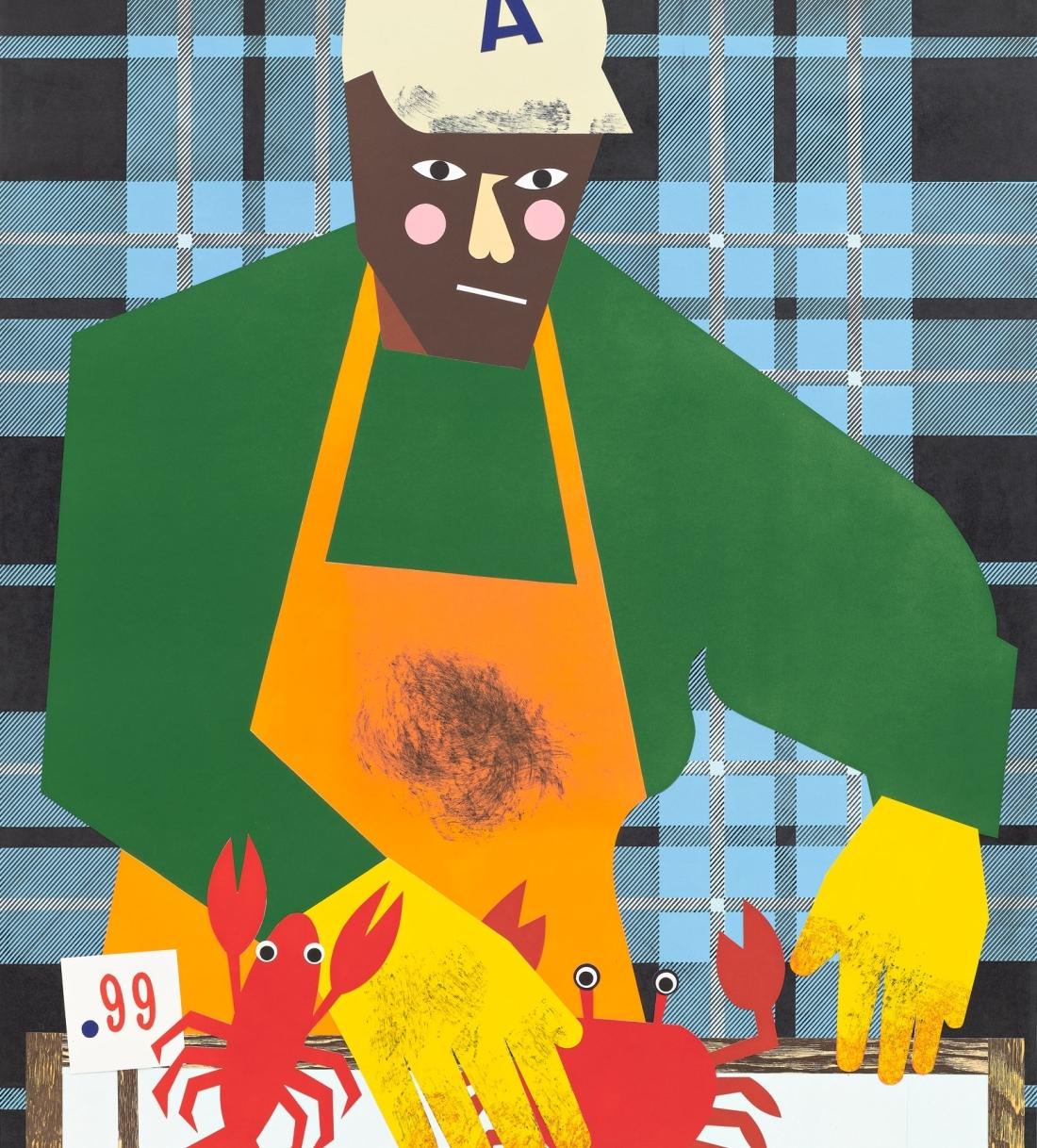
Nina Chanel Abney, Anthony, 2022. Collage on panel.
The Gordon Parks Foundation is pleased to present Nina Chanel Abney: Fishing Was His Life, an exhibition of new works by Nina Chanel Abney, a 2020 Gordon Parks Foundation Fellow.
Through her use of vivid color, grand scale, and a combination of representation and abstraction, New York-based Chicago-born artist Nina Chanel Abney proposes a new type of history painting. For this exhibition, the culmination of her 2020 Gordon Parks Foundation Fellowship, Abney has created a series of collages inspired by Gordon Parks’s photographs of the fishing industry in and near Gloucester, Massachusetts, and at the Fulton Fish Market in New York City in the 1940s. While Parks’s photographs focus on white laborers and their work sites, Abney imagines the Black workers whose contributions were often made invisible through the lens of mainstream narratives.
Black people have long been a cornerstone of this country’s commercial fishing industry, particularly along the Gulf Coast—in Texas, Louisiana, Mississippi, Alabama, and Florida. Yet a series of man-made catastrophes, from redlining to environmental racism, have threatened their livelihood and existence. In the 1970s and 1980s, for example, Black oysterers had to fight redlining laws that disproportionally limited their work on the richest oyster beds and waterways. Along the Gulf Coast, Black fishermen who make their living from shrimp and oysters continue to suffer from the impact of Hurricane Katrina in 2005 and the 2010 BP oil spill. In Chesapeake Bay, the presence of Black workers in the fishing industry has declined from 90 percent to nearly zero.
As a result of systemic racism, Black fishermen to this day have little access to the capital and resources necessary to grow and sustain their businesses. By showing Abney’s collages alongside Parks’s photographs from decades ago, Fishing Was His Life aims to illuminate the erased narratives and rich cultural legacy of African Americans in the commercial fishing industry.




























